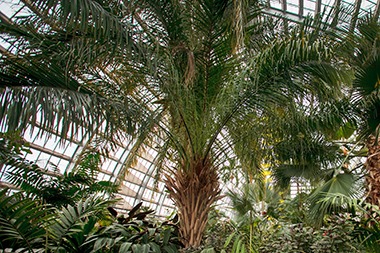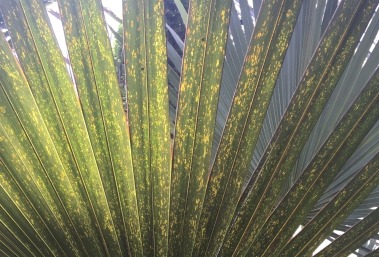At 65 ft high and 90 ft wide, this is the largest room in the Conservatory. It is designed as an idealized tropical landscape, featuring more than 70 graceful palms, as well as other plants from warm habitats all around the world.
Scheelea Palm

In 1926, the Field Museum gave the Conservatory a seed collected on one of their expeditions. This seed of the Scheelea Palm grew to be one of the tallest and largest plants in the Conservatory’s collection. It was removed in 2019 when it outgrew the space, however its offspring is now growing in the nearby vicinity!
Palm leaf structure

Palm leaves are called fronds and can come in 3 major shapes: feather, fan, and fishtail. Names for other elements in nature, these three types of fronds are quite different in appearance. The feather fronds have an abundance of small, thin leaves coming from a central spine, whereas the fishtail and fan appear unified, like a broadleaf maple or oak. The fan, as its name suggests, looks a lot like an accordion, folded fan, with the portion closest to the stem narrowing greatly from the the other side. The fishtail frond is less common than the others and typically looks like two smaller fans attached to one another. As you walk through this room don’t forget to look up and see if you can figure out which palm has which type of frond.


